|
The Sweet Smell of Sweet Grass
by Bob Brooke
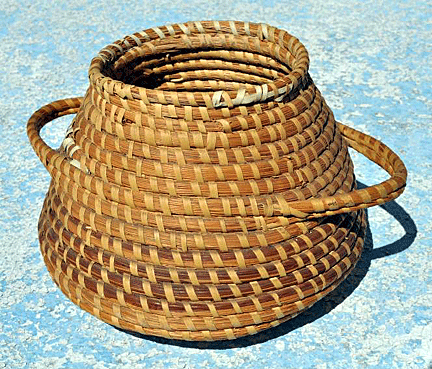 QUESTION: QUESTION:
My grandmother just gave me a flat
basket that smells as sweet as new-mown hay. She said it belonged to her
mother but isn’t sure where she got it or when. Can you tell me
something about it?
Thanks,
Claire
__________________________________________________________
ANSWER:
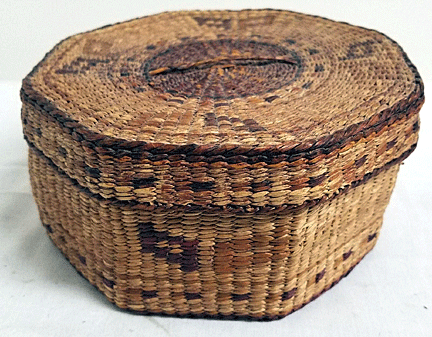 The
story of South Carolina's Low Country sweet-grass baskets begins
centuries ago on the rice farms of Africa. During the 15th and 16th
centuries, black men brought over to America as slaves made strong,
sturdy baskets out of bulrush, a coarse marsh grass that grew along the
tidal rivers of what’s today South Carolina. The baskets winnowed rice,
stored grain, and held vegetables collected from the garden. The
story of South Carolina's Low Country sweet-grass baskets begins
centuries ago on the rice farms of Africa. During the 15th and 16th
centuries, black men brought over to America as slaves made strong,
sturdy baskets out of bulrush, a coarse marsh grass that grew along the
tidal rivers of what’s today South Carolina. The baskets winnowed rice,
stored grain, and held vegetables collected from the garden.
Eventually buckets and crates replaced the baskets, but families still
used them store bread, fruit, clothing, and other household staples.
After the Civil War, former slaves continued to make baskets on their
own family farms, but now the women made them while the men gathered and
harvested the sweet grass and taught their sons to do the same. The
women chose sweet grass as their medium because it is softer and more
pliable than bulrush and retains the scent of fresh-mown hay for years.
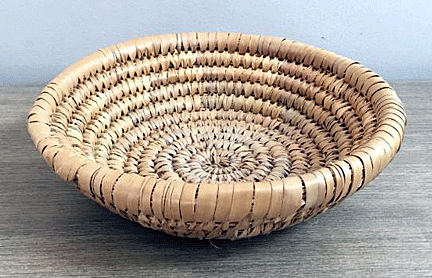
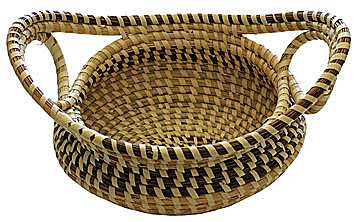 Although
coiled sweet-grass basket-making has died out in many South Carolina
communities, the 300-year-old tradition continues to flourish in the
coastal town of Mount Pleasant, north of Charleston. Today, it’s the
only place where this type of basketmaking is done. For years,
individual artists have made them at home using age-old techniques
passed down from generation to generation. Ancestors of many of today's
basketmakers got a boost back in 1916 when a local Charleston bookseller
began buying Mt. Pleasant baskets in quantity. He sold them first in his
store and later by mail for more than 30 years. Although
coiled sweet-grass basket-making has died out in many South Carolina
communities, the 300-year-old tradition continues to flourish in the
coastal town of Mount Pleasant, north of Charleston. Today, it’s the
only place where this type of basketmaking is done. For years,
individual artists have made them at home using age-old techniques
passed down from generation to generation. Ancestors of many of today's
basketmakers got a boost back in 1916 when a local Charleston bookseller
began buying Mt. Pleasant baskets in quantity. He sold them first in his
store and later by mail for more than 30 years.
In the 1930's, basketmakers saw a new surge of interest from gift shop
owners, museums, and hand-craft collectors. The paving of Highway 17
North and the construction of the Cooper River Bridge made the route
through Mt. Pleasant a major north-south artery. Basketmakers then
started marketing their wares from roadside basket stands in their front
yards, which were directly accessible to tourists.
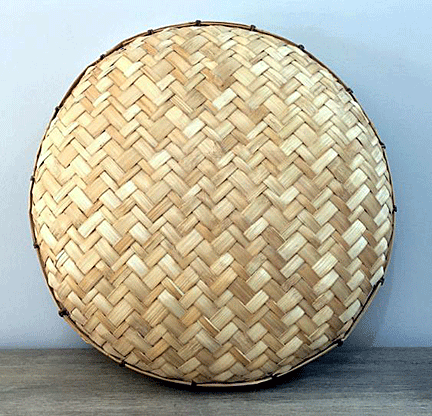 Some
basketmakers would also make the trip to Charleston to sell their
homegrown farm produce and their baskets at the open market there. Old
photographs capture these merchants with baskets on their heads, bearing
their wares. Some
basketmakers would also make the trip to Charleston to sell their
homegrown farm produce and their baskets at the open market there. Old
photographs capture these merchants with baskets on their heads, bearing
their wares.
Though traditional basket shapes are still popular, many creative shapes
have been added over the years. There are bread trays, sifting baskets,
magazine baskets, place mats, clothes hampers, and baskets to hold
firewood, hats, and cakes.
The time, care, and skill that goes into each basket can never be
recouped by the price. Long hours of work are involved in making these
baskets. Even for the most experienced basketmaker, a simple design can
take as long as twelve hours.
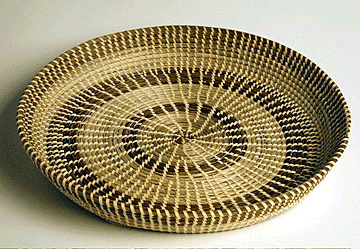 The
grasses must be gathered, hauled, cleaned, dried, and stored. The artist
starts each basket from the bottom up, beginning with a knot of
sage-green sweet grass. The grasses are coiled round and round and are
sometimes mixed with rush. Coils are then bound with white strips of
palmetto, using a tool called a "bone." The bone is generally fashioned
from an old teaspoon handle that's been hammered and filed, but some
craftspeople use half a scissors or a pocketknife as their tool.
Whatever the choice, each basketmaker usually has a favorite bone and
works with it exclusively. The bone works like a shuttle between the
rows of coiled grass to make space for the binding strips of palmetto. The
grasses must be gathered, hauled, cleaned, dried, and stored. The artist
starts each basket from the bottom up, beginning with a knot of
sage-green sweet grass. The grasses are coiled round and round and are
sometimes mixed with rush. Coils are then bound with white strips of
palmetto, using a tool called a "bone." The bone is generally fashioned
from an old teaspoon handle that's been hammered and filed, but some
craftspeople use half a scissors or a pocketknife as their tool.
Whatever the choice, each basketmaker usually has a favorite bone and
works with it exclusively. The bone works like a shuttle between the
rows of coiled grass to make space for the binding strips of palmetto.
Once the basketmaker forms the bottom, she builds up the sides, and may
add a handle or cover. Some makers decorate their baskets with pine
needles.
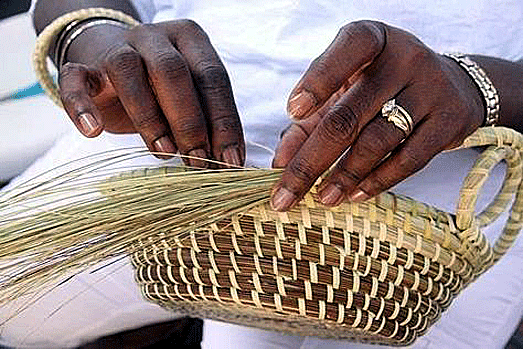
Today, South Carolina Low Country baskets have become part of the
collections at the Smithsonian Institution and the American Museum of
Natural History, as well as many individuals. While older ones can sell
for three figures, newer ones from the latter 20th century can be had
for $10-25.
<
Back to Readers Ask Archives
Next Article >
|
